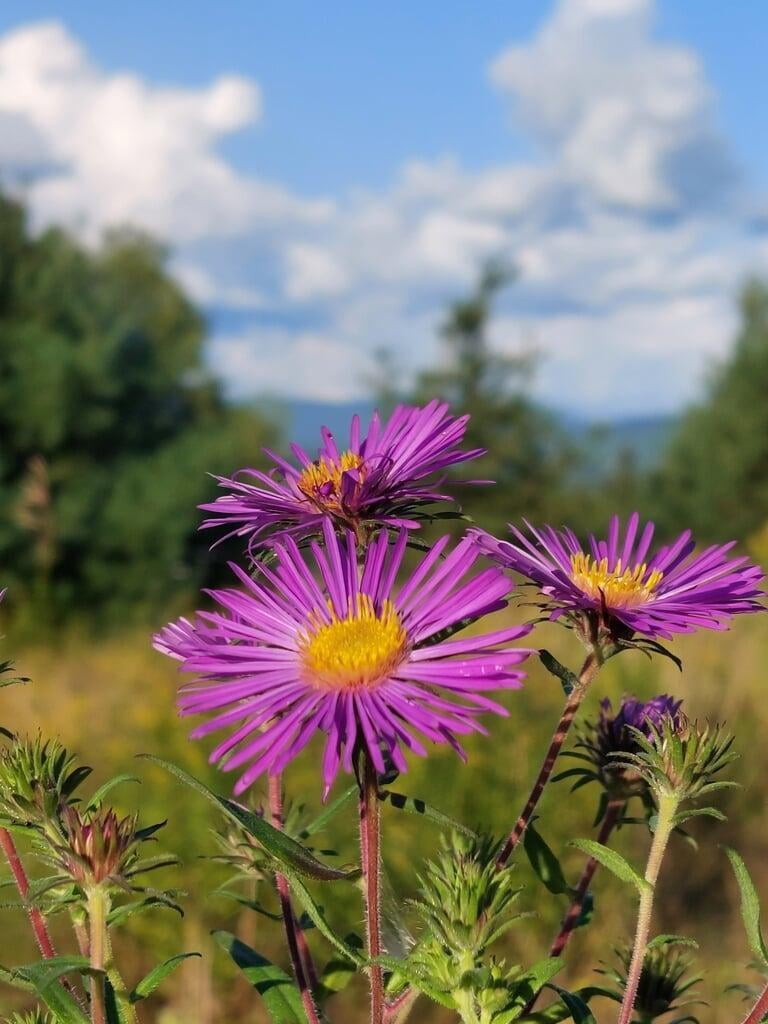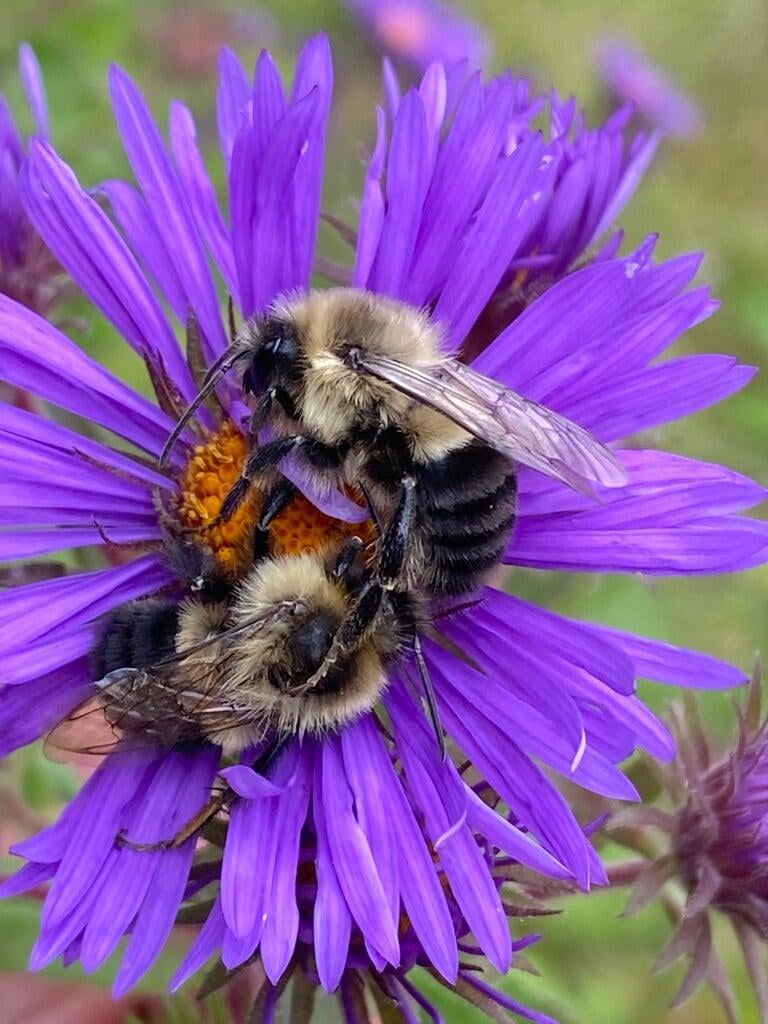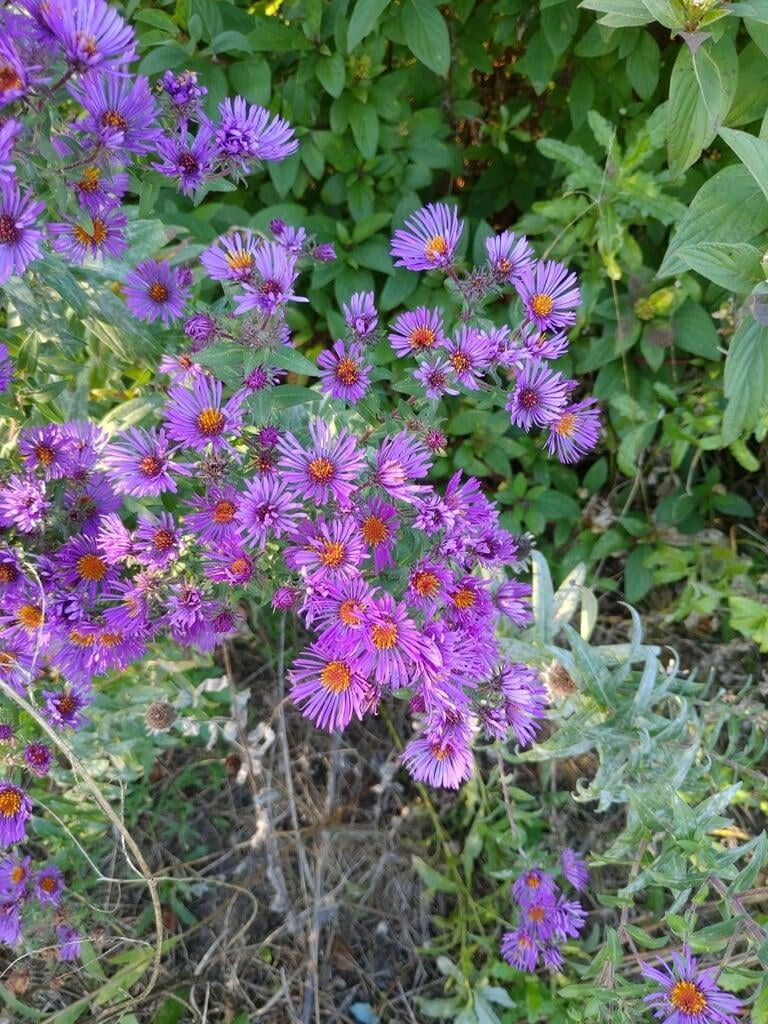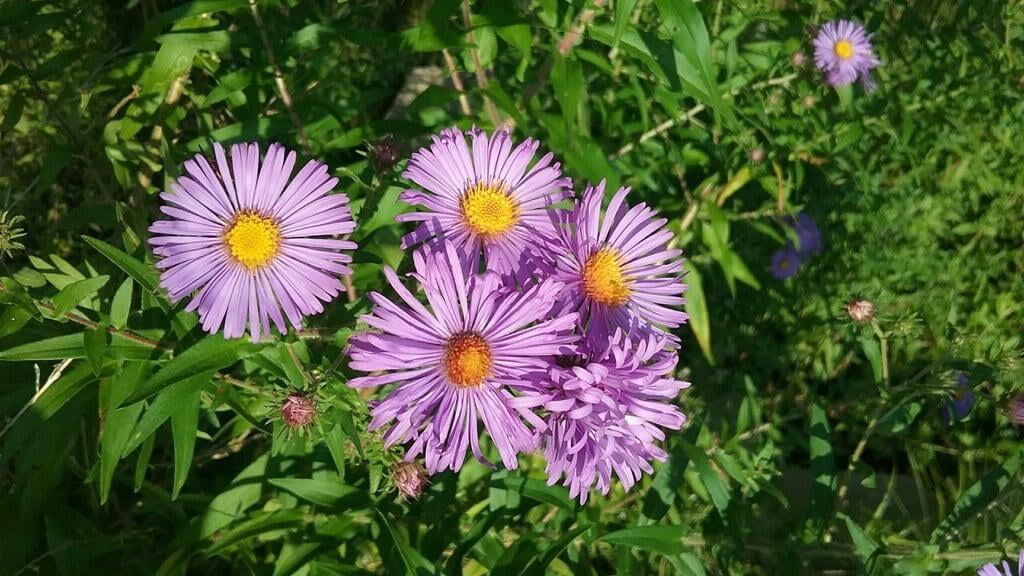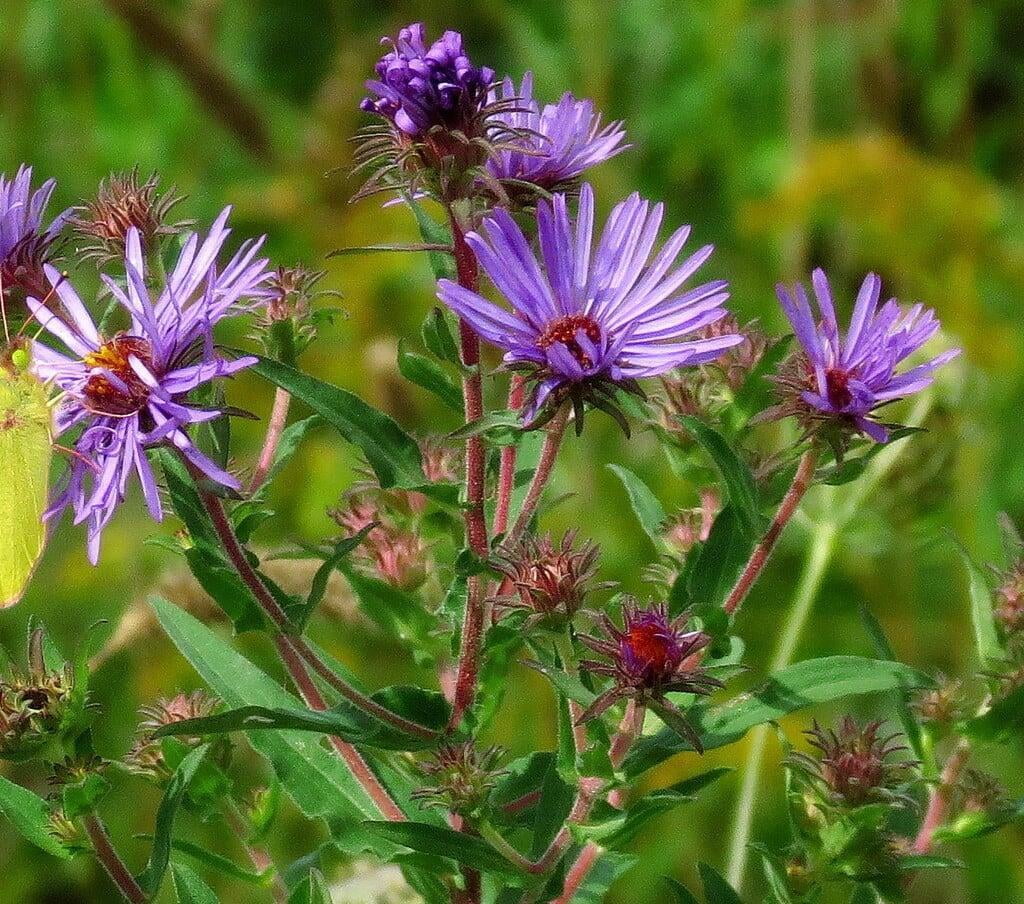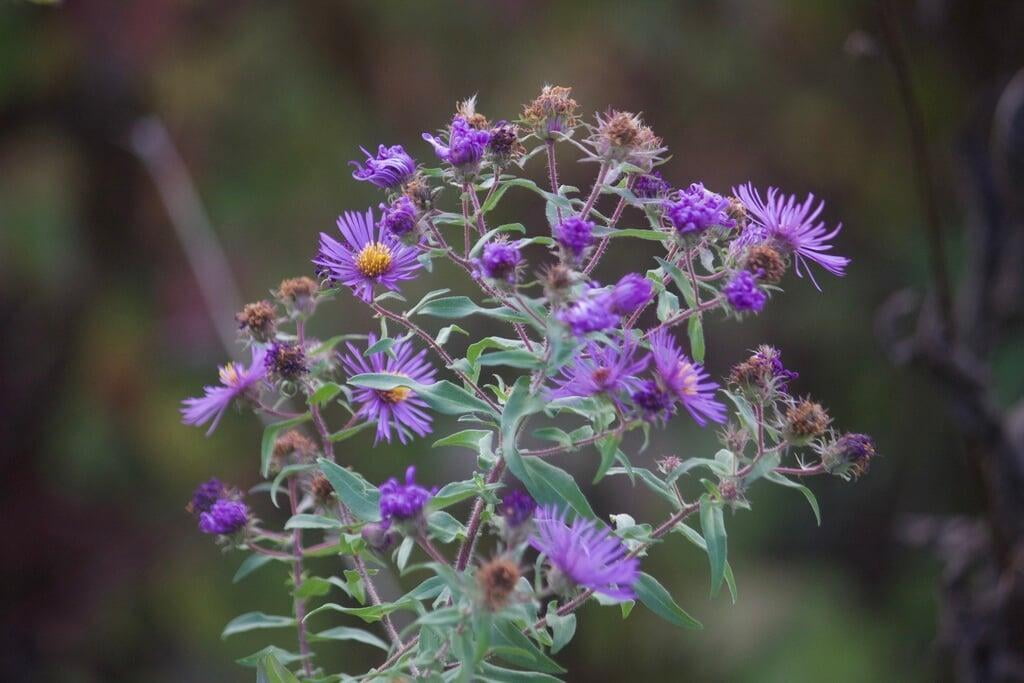Symphyotrichum novae-angliae
New England aster Description:
Symphyotrichum novae-angliae, commonly known as the New England aster or Michaelmas daisy, is a showy herbaceous perennial plant native to North America. It typically grows to a height of 3-7 feet and has a bushy, upright habit.
The leaves of Symphyotrichum novae-angliae are lance-shaped, toothed, and arranged alternately along the stems. The flowers are daisy-like with bright, vividly colored petals arranged in large, branching clusters at the top of the plant. They bloom from late summer to early fall, typically in shades of purple, pink, or white.
Symphyotrichum novae-angliae prefers moist, well-drained soils and full sun, but can tolerate some shade. It is an important plant for pollinators, attracting bees, butterflies, and other insects with its nectar-rich flowers. It is also used in ecological landscaping and as a native plant in gardens and naturalized areas.
This plant is easy to grow and can spread quickly, making it a great addition to naturalized areas, wildflower gardens, or borders. With its stunning blooms and important ecological role, Symphyotrichum novae-angliae is a popular choice for gardeners and nature enthusiasts alike.
Native Range:
New England aster is most commonly found in the Midwest and Eastern United States. It does, however, have a range that extends into the Western and Southern United States. In Minnesota, New England aster is most commonly found in the Western and Southern portions of the state.
Standard Plant Information:
Plant Height: 3' - 7'
Bloom Time: August - October
Preferred Habitat: Does well in part shade to full sun. Often found in moist fields and woodland edges.
Sowing:
For most homeowners, the best option is to scatter seed on the ground by hand broadcasting at a minimum of 16-64 pls ounces per acre. For even coverage, we recommend that you broadcast seed in perpendicular rows across the site to ensure even coverage.
You’ll want to broadcast any grass seed first, which will get raked into the soil lightly. Next, it is ideal to mulch the area lightly with either a clean (no seed) straw or preferably with our native Little Bluestem straw, sold at our retail garden centers. After a light mulching is complete, now it’s time to broadcast your native wildflower seeds, which should not be raked into the soil. A good rain or watering is sufficient to cover the seed.
Planting:
Simply dig a hole in the soil slightly larger than the plant’s roots. Ensure that the soil line of the plant is maintained during the transfer (i.e. the plant should be at the same level with the ground as it was in the pot). Pack any loose dirt back around the plant and make sure you water it well the same day to ensure it has the best chance of survival.
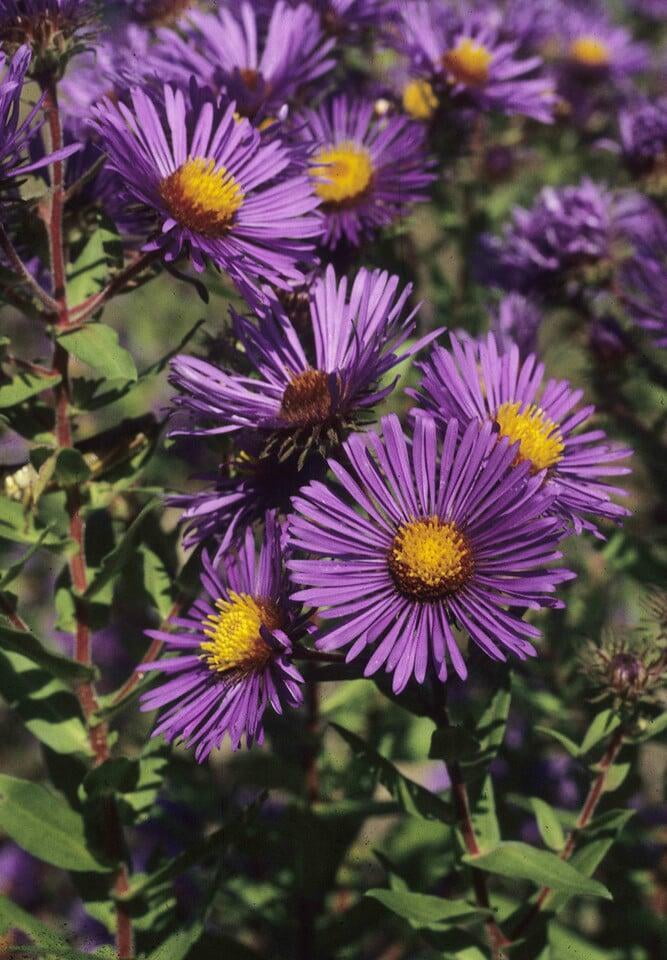
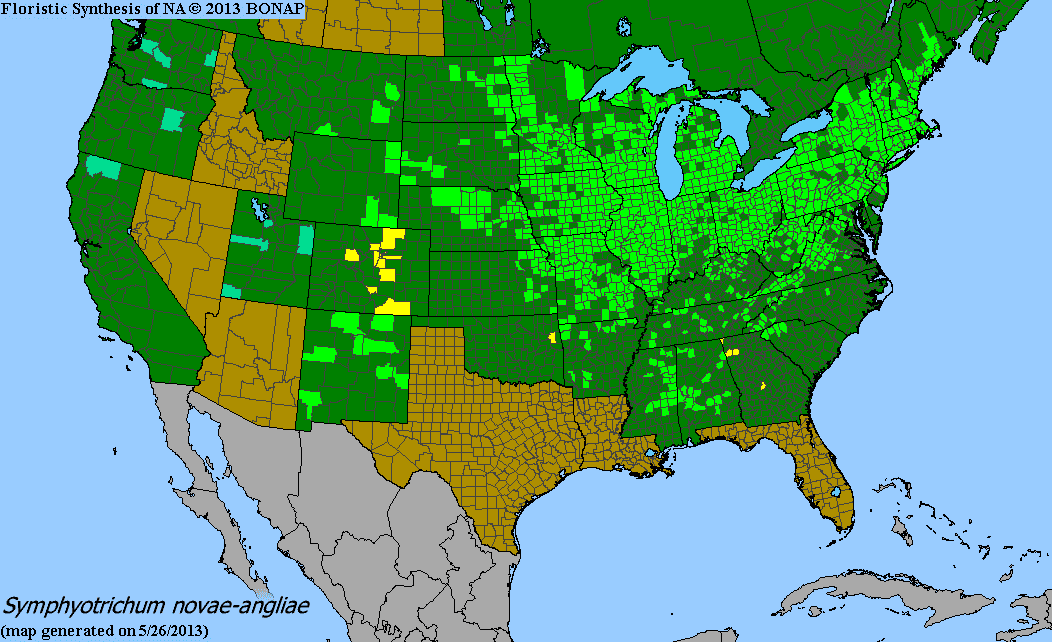
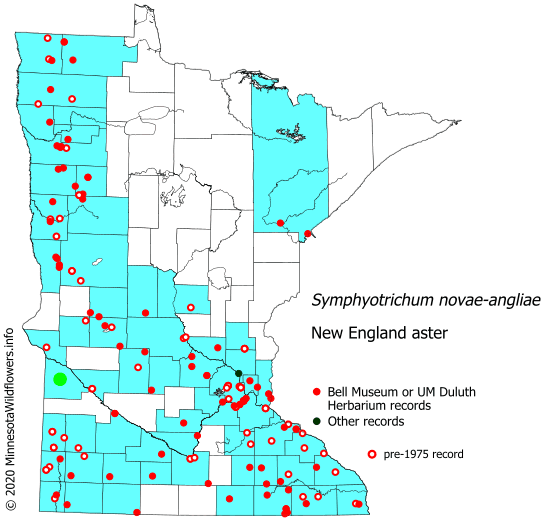
maps used with permission from MN Wildflowers
Symphyotrichum novae-angliae Gallery
Symphyotrichum novae-angliae Gallery
